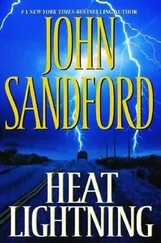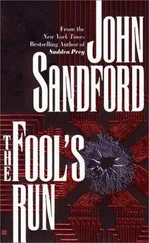Unfortunately, that’s not how it works. Now we’re into proper rocket science, something called the “Tsiolkovsky rocket equation.” Don’t worry, no math here; you can get that from Wikipedia. The rocket equation ties together three things: the amount of delta-vee you want, the exhaust velocity of your rocket, and the mass ratio of your rocket.
What’s “mass ratio”? That’s just the ratio of what your rocket weighs fully loaded with reaction mass, divided by what it weighs when you’ve used up all that mass. That empty (or “dry”) weight is everything that isn’t fuel; it includes the empty tanks that held the fuel.
Exhaust velocity is the magic number. As long as the total delta-vee you want is less than your exhaust velocity, the amount of reaction mass you need isn’t too bad. For example, a rocket that burns oxygen and hydrogen, one of the best chemical fuels you can use, has an exhaust velocity around 4 km/s. If you want to get a delta-vee of 2 km/s, the rocket equation says you need a mass ratio of about 1.7. That means you need to carry 0.7 tons of fuel for every ton of dry rocket you’re trying to launch. If you want a delta-vee of 4 km/s, the ratio goes up to 2.7—1.7 tons of fuel for every ton of dry rocket. That’s not hard to build.
If you want more velocity than that, it starts to get ugly quickly. Suppose you want a delta-vee of 8 km/s, enough to get you into Earth orbit? (In reality, it’s a little harder than that, but we’re simplifying for the sake of discussion.) You can think of that as being like getting 4 km/s twice. But, for that first 4 km/s, you’re trying to push a rocket that is 2.7 times bigger, because it has to be carrying all that fuel to get the second 4 km/s. Your mass ratio winds up about 7.5. Only 13 percent of your ship is actually ship; 87 percent is fuel that you burn up.
It’s awfully hard to build a rocket strong enough to survive flight that is 87 percent fuel. Tanks can only be made so lightweight, and there has to be a useful payload, like people or instruments. It’s right on the edge of what our engineering is capable of.
Or a little beyond. No one has yet built a successful rocket that just launches from the earth straight into orbit (what’s called “single stage to orbit”). Everything we build has stages, so we can throw away the really big and heavy fuel tanks as they get emptied.
In space, where you’re not fighting gravity and you can use lower accelerations, you can build a lighter vehicle. Mass ratios of 10 or better are possible. But you’ve seen how the numbers multiply up. Even starting from Earth orbit, going to Saturn on a Hohmann transfer, entering Saturn orbit, leaving Saturn orbit, and returning to Earth? With our hydrogen-oxygen rocket, it’s simply impossible. You’re talking about mass ratios way over 100.
Besides, that’s not fast enough! We need much, much higher velocities. We’ve got to stay within the laws of physics, so what can we change? The exhaust velocity. The higher that velocity, the faster our ship can go (for some particular mass ratio).
In our book, the Chinese are using tried-and-true technology, at least for fifty years from now. Nuclear thermal rockets can get much higher exhaust velocities than chemical rockets (see NERVA, Wikipedia). The Celestial Odyssey uses an exotic reactor design called a “lightbulb reactor” that no one’s built yet but that engineers have designs for. If we needed them, we could have them in fifteen or twenty years. The Chinese ship pushes that technology to the limits of what engineers think we can do. It heats the exhaust to around 9000°C and it uses hydrogen for the reaction mass. It could use any gas as the reaction mass, because it’s just heating it up in a reactor, not trying to burn it. Hydrogen is best because lighter atoms move faster than heavier ones at the same temperature, and hydrogen is as light as we can get. That gets the Chinese the highest exhaust velocity, 22 km/s, which is five times better than burning hydrogen and oxygen.
With that kind of exhaust velocity and a mass ratio of 7 or so, the Chinese can get from Earth to Saturn in around a year and a half. (How do we know that? Later.) It doesn’t get them back, but Saturn’s rings are water ice and the Chinese can break that down to get the hydrogen to refill their tanks.
Could such a spacecraft make it to Saturn in half a year? Not likely. They’d need nearly three times the delta-vee, and the mass ratios would be hundreds to one. The Americans need something better. Enter the VASIMR engines. VASIMR stands for “Variable Specific Impulse Magnetoplasma Rocket.” “Specific impulse” is how rocket scientists refer to exhaust velocity. We didn’t make the VASIMR up. They’re being tested on Earth, fairly small ones. Ours are a lot bigger, and a little better-performing, but it’s fifty years from now. Building bigger and better VASIMRs doesn’t look hard; powering them does, and we’ll get back to that.
Becca’s Science Friday interview in Chapter 21 explains why variable exhaust velocity is, in general, a good idea. The Nixon can get more thrust for the same amount of power, when the ship is fully laden, by keeping the exhaust velocity low. That consumes more reaction mass for the same delta-vee, but it gets the ship up to speed faster, shortening the trip time. As the ship gets lighter, it can get by with less thrust and still keep up the acceleration, so the Americans can run the exhaust velocity higher and make more efficient use of the remaining reaction mass.
We built a spreadsheet to let us play around with different velocity profiles. For a trip time of four to five months, we were able to get the ship down to a mass ratio of 10 with an exhaust velocity that varied from 35 up to 300 km/s. That’s about half the mass ratio we could come up with for a fixed-specific-impulse ship of any remotely plausible design. Go, VASIMRs!
The reason the Americans’ ship uses water instead of straight hydrogen is because it doesn’t need to use straight hydrogen. The exhaust velocity that comes out of a VASIMR depends on the charge on the ion and its mass. Hydrogen produces the highest exhaust velocity. Strip off one electron and you’re left with a charge of one and an atomic weight of one. Strip one electron off of oxygen and you’ve got a charge of one but an atomic weight of 16, so the electromagnetic fields in the VASIMR won’t push it anywhere as fast. One of the ways the Nixon has to tailor its exhaust velocity is to tailor the mix of oxygen to hydrogen.
So how can the VASIMR keep up with a “lightbulb” ship? The lightbulb gets its initial velocity from one long burn—the rest of the trip it’s in free fall, until the very end, when another burn will slow it down so it can go into orbit around Saturn. With a VASIMR, you simply don’t turn it off. You’re making a much more economical use of your reaction mass, and the accumulating thrust eventually adds up to much more velocity than is possible with a lightbulb.
VASIMRs have a problem, though. They’re powered by electricity, lots of it. The only way we know of to generate so much power is a nuclear power plant.
Surprisingly, the reactor isn’t the problem. Reactor cores can generate amazing amounts of thermal power. You have to get that heat out or the core melts down, but NASA figured out how to build a liquid-lithium-cooled core the size of a coffee can that would output 2.5 megawatts back in the 1970s. That’s already as good, in terms of both watts per kilogram and watts per cubic centimeter, as what the Nixon needs. The two reactors in the Nixon are each four thousand times bigger… but they are not better.
The huge problem the Nixon faces is that only a little more than half of that heat can get converted into electricity that goes into thrust and is kicked out the back in the VASIMR exhaust. There are some fundamental thermodynamic principles that make it unlikely we’ll ever be able to do much better than that. The rest of the heat, nine gigawatts or so, ends up being waste heat and has to be disposed of before everything melts down. That is the really, really hard problem in space.
Читать дальше








